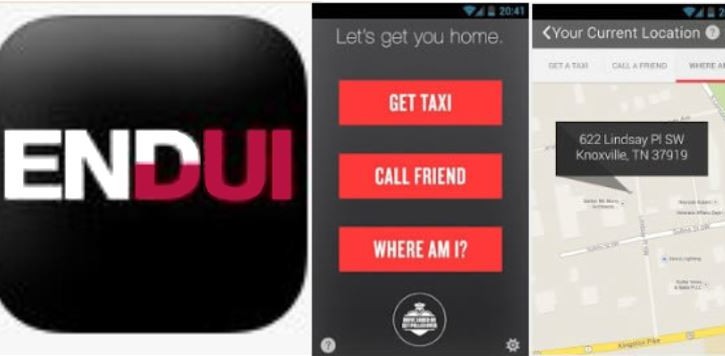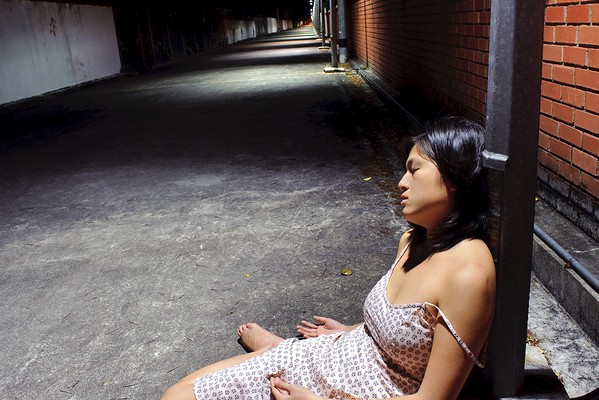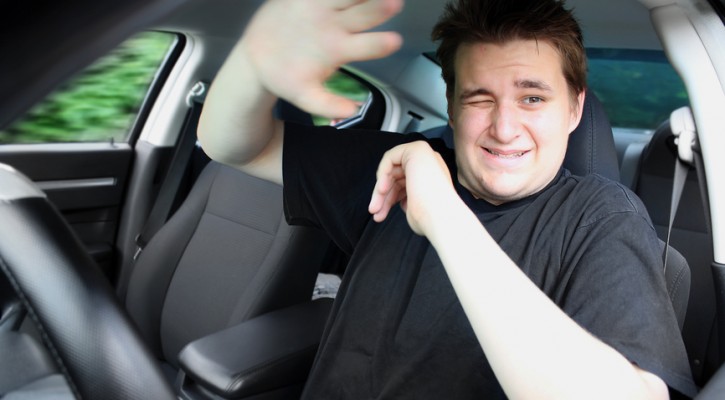Tag Archive: DUI

Stay Safe With Spring Break Apps
March 10, 2016
For those headed out of town for spring break, whether it be to a sunny beach or a snowy ski slope, your vacation can create a lifetime of fond memories or, with one mistake, a lifetime of regret. Here are a couple of spring break apps to help you avoid that lifetime of regret.
A lot of students on spring break give in to the urge to drink and the lack of judgment that comes with alcohol use can lead to trouble. Police in spring break locales are beefing up their DUI patrols and are on the lookout for any driver that might show signs of being under the influence of alcohol. It’s such a big problem in spring break cities that the local police have no tolerance for driving under the influence and are very unforgiving.
One way to stay out of trouble is to decide on a plan before you go out to drink. If you decide beforehand that you’ll use a designated driver or call a cab to get home, chances are that you’ll stick with that decision but, if you wait until after you’ve been drinking and your judgment is affected, you may not make such smart choices. If you feel you must drink, here are a couple of spring break apps that, hopefully, will keep you out of trouble.
ENDUI (as in End DUI) is an app that warns you if you’ve had too much to drink. The user plugs in their sex, height, and weight and then, by telling it how many drinks have been consumed, it calculates your approximate Blood Alcohol Content (BAC). The app also has games that can test your reaction time. If you decide, before you go out, to limit your drinking, this can be a good tool to warn you when you’ve reached your limit. However, the app only gives an approximate BAC and can’t be used to determine your actual BAC. One drink, such as certain cocktails can have several shots and have up to four times the alcohol content of a typical drink. Only a breathalyzer or blood test can give an accurate BAC reading.
Another app called “SaferRide”, created by the National Highway Transportation Safety Administration (NHTSA), doesn’t try to determine your BAC but, instead, can locate and call a local taxi service for anyone who needs a ride home. It can also hold a list of designated drivers that the user pre-programs into the app. This app is ideal for those on vacation in an unfamiliar city.
Both of these handy spring break apps are free and available for download:
SaferRide – Android, or Apple iOS.
Remember that buzzed driving is impaired driving. Make your spring break a fond memory and not a regret.

Planning For A Fun And Safe Spring Break
March 3, 2015
It’s that time of year again and the warm beaches of Florida are going to be prime destinations for spring breakers. Spring break is a lot of fun and can provide a lifetime of memories but it can also, just as easily, turn tragic. If you’re headed to the coast, remember the lessons learned in your drug and alcohol course as well as our top safety tips for a safe spring break.
- Maintain a buddy system – Travel with friends and stay with those friends to keep each other out of trouble. Along with college students, spring break also attracts unsavory types such as thieves and sexual predators. Don’t go off alone with someone you don’t know.
There are a lot of reasons not to drink but, if you feel you must:
- Have a plan – Plan on how you’ll get home safely, either by cab or a designated driver. Plan to limit your drinking. If you make a plan before you go out, chances are, you’ll stick with that plan but if you wait until after you’ve been drinking to decide what to do, your judgment will be clouded and you could drink yourself into trouble.
- Limit your drinking – While the effect of alcohol is different on everyone, a general rule of thumb is that it requires at least one hour for the body to process the alcohol from one drink. The more you drink, the longer it takes for the body to process the alcohol and get it out of your system. For females, who are generally smaller, one drink can affect you much more quickly than it will for a male and can take longer for the body to process.
- Binge drinking is deadly – Your body can only process so much alcohol before it becomes toxic. Alcohol affects your motor skills. You quickly start to feel the effect on the voluntary motor skills that control your speech, vision and ability to walk but too much alcohol can shut down the involuntary muscles controlling the heart and lungs and death from alcohol poisoning is the result. Drinking games look like fun but, for your own safety, make a plan before you go out not engage in any games that could lead to alcohol poisoning.
- Know what you’re drinking – Different drinks have different amounts of alcohol. Some sweet, flavorful cocktails can have up to four shots of liquor. Depending on your body size, a single cocktail can immediately put you over the legal limit.
- Females; guard your drinks – A female who leaves her drink unattended can easily become the victim of a sexual predator who has slipped Rohypnol (the date rape drug) into her drink. If you leave your drink unguarded at any time, dump it and get a fresh drink.
- Alcohol and the sun don’t mix – If you only drink alcoholic drinks when you’re out in the sun, you can easily become dehydrated. The combination of the sun and activities can quickly wear you out and alcohol will compound that effect. Switch off with water or fruit drinks.
- If it seems like a crazy stunt, it’s probably too dangerous – After drinking, spring breakers have died trying to show off by balancing on bannisters, doing pull ups off of hotel balconies, or trying to dive from a balcony into the hotel pool. Unfortunately, instead of stopping them, their friends, also under the influence of alcohol, urged them on. If you see someone trying to pull a dangerous stunt, try to stop them or call local security. You could save their life.
- Scooters and mopeds – If you rent a scooter or moped, make sure you’re familiar with its operation and watch out for other drivers on the road who may not be watching out for you. Never try to operate a scooter or moped if you’ve been drinking.
- Don’t party to the end – Don’t try to party up to the last second before leaving for home. If you’re driving, everyone in your party should try to get a good night’s sleep before heading home. Driving drowsy is just as dangerous as drunk driving.
- Stay alert driving on the road – Share driving duties and switch off with other drivers to remain alert. Long periods on a boring interstate can lead to “highway hypnosis”; avoid that by stopping every two hours or 100 miles to refresh yourself or take a short nap. If you have a long way to drive, don’t try to do it in a single trip. Stop and get some rest before continuing.
- DON’T DRIVE DRUNK OR DRUGGED!!!! – It should go without saying but there are far too many tragedies on spring break because people ignored this simple piece of advice!

YouTube Videos Fail To Show Whole Story
February 25, 2015
YouTube videos of alcohol use by young people fail to show the whole story and can be a dangerous influence on teens. This conclusion is the result of a study conducted by the Center for Research on Media, Technology, and Health, at the University of Pittsburgh and published in the journal Alcoholism Clinical and Experimental Research.
The study’s authors looked at 70 of the most popular YouTube videos regarding alcohol intoxication. Combined, the videos had a total of more than 333.2 million views and the number of “like” designations totaled more than 99 percent compared to less than one percent of “dislikes.” Twenty-four percent of the videos involved the use of motor vehicles.
The problem with the videos, according to the researchers, is that the videos portray alcohol use in a funny or glamorous way without showing any of the negative aspects of alcohol abuse. Negative aspects of alcohol use include, but aren’t limited to; vomiting, sexual assault, car crashes, arrest, and death by alcohol poisoning.
For parents, these videos open up an opportunity to start a dialogue with teens about those negative aspects of alcohol abuse that aren’t portrayed in the YouTube videos.
Read more: Hammered And Heedless: Do Dangerous Drinking Videos Harm Teens?

Top Ten Bad Driving Habits By Teens
March 9, 2014
When teens first start learning to drive, they are usually very careful and willing to listen to advice but, once they get their operator’s license and start driving on their own, some seem to think that all the rules and safe driving advice were just for the driving exam and no longer apply to them. That attitude quickly turns to tragedy for some with an average of six teens killed and 493 injured in traffic crashes every day. More than half of all teen crashes are single vehicle crashes, meaning that, due to high speed or distractions, the teen ran off the road and crashed; no other cars were involved.
The following list of bad teen driving habits isn’t in any particular order. One could be just as bad as another but separately or combined, they are all dangerous.
1. Driving distracted – One of the biggest hazards on the road today is distracted driving. We’ve all heard about the dangers of texting and cell phone use but there are other distractions as well, such as;
- Paying more attention to passengers than to the road ahead.
- Eating and drinking
- Loud music
- Applying makeup
- Looking at things out the window instead of at the road.
- Adjusting the radio or loading CDs
All of these distractions can take your eyes off the road just long enough for a dangerous problem to creep up unnoticed. Continue Reading
Beyond the Breathalyzer; Testing Drivers For Drugs
November 21, 2011
Concateno, a company made up of several drug and alcohol testing labs and manufacturers throughout Europe have announced the development of a simple hand held road-side testing device that police can use to test drivers for the presence of drugs.
While drugged driving doesn’t get as much press as driving under the influence of alcohol, it is a serious problem and apparently, drug use among drivers is just as prevalent as alcohol use. According to the Concateno press release, an Australian study showed that 35% of drivers hospitalized after a crash showed the presence for illicit drugs compared to 29% testing positive for alcohol.
The National Highway Traffic Safety Administration (NHTSA), latest study on drugged driving showed that among the total number of drivers who were killed in car crashes in 2009, 18% tested positive for drugs. Those figures don’t represent the depth of the problem because not every state tests for the presence of drugs. Among the fatally injured drivers who were tested, 33% showed the presence of drugs in their system at the time of the crash.
A 2007 study by NHTSA showed that at least 16% or one out of every six weekend nighttime drivers tested positive for the presence of drugs. The 2008 Monitoring The Future Study, an ongoing annual assessment of drug and alcohol use by high school students showed that, among the respondents, one in ten high school seniors reported driving after smoking marijuana within the two weeks before the interview.
The new hand-held device tests a single oral fluid sample and can, within five minutes, test for the presence of cocaine, cannabis, opiates, amphetamines and methamphetamines. A previously developed device made by the same company has been used by police forces in Italy, Spain, Australia and Croatia. The new device has not been approved yet for use in the United Kingdom but there is strong public pressure to add it to law enforcement’s arsenal of weapons against drunk and drugged driving.
In Australia, where the device has been used for some time, officials report that, over the past five years, the number of drivers charged with driving under the influence of drugs has dropped by half.
This is a device that American law enforcement agencies may want to consider adding to their equipment list to more effectively remove drugged drivers from America’s roads.
